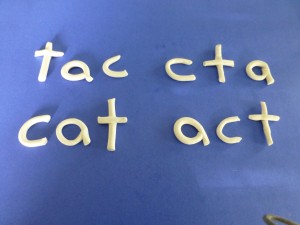Understanding Dyslexia
Program Details
Disorientation – talent and problem
A unique aspect of the Davis approach is the understanding of picture-thinking and the role of the imagination in both the talents and difficulties of dyslexia.
When a dyslexic thinks creatively, he/she unconsciously engages their natural talent of imagination and 3-D thinking (disorientation) to see the problem from different points of view. Thoughts may be vivid, very fast and experienced as if real. Disorientation enhances creativity, inventing and solving real-world problems.
On the other hand, some tasks, such as reading, writing, listening and task completion, require stable perception. When a person disorients during these tasks, problems or mistakes are likely to happen.
How does disorientation affect reading?
Non-dyslexic readers tend to stay oriented when encountering unknown words and will ask or find out what the unknown word means, or how to pronounce it or how to spell it.
Dyslexic readers need to know the spelling, pronunciation and be able to picture the meaning of a word before it can be reliably recognized. If any one of these is missing, the word is not recognized and their natural tendency is to disorient in an effort to recognize the word.
Now the word may be misperceived because the imagination is looking at a two dimensional symbol from multiple points of view. This may lead the reader to believe they are seeing something else. If they continue to read when they are disoriented, they will continue misperceiving and making mistakes even on words that they know.
Abstract words (trigger words)
Dyslexics will eventually read words that they can associate with an image (like computer, house, swim, yellow…). But “grammar” words such as a, the, then, than, that, what, was, saw, since, or as) will continue to cause confusion and disorientation because these words have vague and multiple meanings that are not easy to picture in a concrete way. They also look similar to each other. They are referred to as “trigger words” in a Davis program because they can “trigger” disorientation even in a high-functioning dyslexic reader.
What about reading comprehension?
Some dyslexics can decode words but don’t really like to read or may only read what is “interesting” (easily imagined, familiar or motivating). Reading is difficult because they do not fully understand what is being read. This is due to the abstract words and words for which they have no image.
Consider these simple client examples:
A problem that ends with a question like this:
Which one should she buy? In this example, every word is abstract except for buy which is similar to by and bye. The student imagined a witch waving goodbye and did not understand the question.
What direction is Toronto from Sudbury? This student lacked an image for the word from and thought the question meant Toronto to Sudbury.
Disorientation and writing problems (dysgraphia)
Picture thinking, confusion and disorientation about letters, words and symbols (punctuation) all play a part in writing difficulties. As well, attention difficulties and/or gaps in foundation concepts of consequence, time, sequence and order make organizing writing a challenge.
When there is difficulty and confusion for any aspect of writing, the dyslexic can become frustrated and may avoid written tasks.
The Davis Dyslexia Correction Program
Who can benefit?
Adults and children 8 years and above who struggle with reading, writing, spelling, comprehension, listening, speaking and/or focus and attention and would like to overcome their difficulties in a way that feels easy and enjoyable.
How does it work?
This program takes approximately 30 hours and is usually delivered in a single week – usually Monday to Friday 9:00 to 4:00.
It consists of:
- Orientation exercises for focus and accurate perception,
- Mastering reading symbols like alphabet and punctuation,
- Simple reading exercises for tracking, word recognition, reading comprehension and memory.
- Davis Symbol Mastery procedure to create clay models of the meaning of abstract words.
- A helper (usually a parent, tutor or family member) is thoroughly trained to support the client in the follow-up work.
- The follow-up work of orientation exercises, simple reading exercises and clay modeling of a list of 217 abstract words begins at home with facilitator support.








